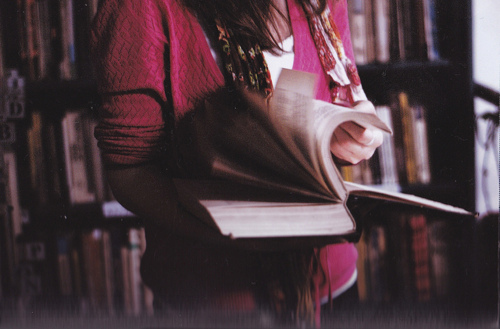Source (Google.com.pk)
Fashion Photography Books Biography
Klein served in the military with the U.S. Army. He was discharged from the service in Paris, France and remained there to study painting from 1948 to 1954, where he was an abstract painter and kinetic sculptor. Klein studied at the Sorbonne on the GI Bill.
He served an apprenticeship with painter Fernand Leger, who did sets, costumes, murals and films. Alexander Liberman, art director of Vogue, had met him in Paris and offered him a contract to work in New York. With Lieberman's blessing, Klein pursued a chronicle book, photographing the city of New York daily for a period of eight months with a 28-mm, wide-angle lens he self-taught himself to use. The book Life is Good and Good for You in New York: Trance Witness Revels (1957), caught the energy and eruptive violence of New York City through its style; and graphics and provoked intense reactions, both positive and negative. Klein developed a personal anti-aesthetic of blurring, distortion, and graininess that reflected his own experience of the city and gave impetus to the emerging genre of street photography. Although this book never found a New York publisher and appeared first in France (followed by Italy and England), it gave Klein recognition in the photography scene. It won France's Prix Nadar Award and led Italian film director Federico Fellini to offer Klein a job. Klein returned to Paris, and has never lived anywhere else since.
Klein’s approach to photography was always irreverent, more to do with the possible outcomes of photographic media and processes, than the creation of pictures. From 1955 to 1965, Klein began shooting glamorous yet innovative pictures for Vogue and other publications expanding the limits of acceptability in fashion photography. He established a reputation as a revolutionalry and talented fashion lensman. He used on-location set-ups, shot with wide-angle and telephoto lenses, sometimes with flash and multiple exposures. Klein, produced three more books, on Rome, Moscow and Tokyo. William Klein is recognized as one of the 20th Century most influential photographers. He is better known in Europe and his adopted hometown of Paris than in his native United States.
In 1965, he started directing, producing and also writing films. His debut was Broadway by Light, in 1958. Most films received more attention overseas than in the United States, particularly The Little Richard Story, and Who are You, Polly Magoo? (1966), mocked the fashion world; Mr. Freedom, (1968), satirized America; and Muhammad Ali: The Greatest, (1974), documented the heavyweight champion. William Klein gave up photography for filmmaking but returned to still camera work in the mid-1980s, encouraged by renewed public interest in his early photographs.
Since 1972, Klein has produced more than 250 TV commercials, mainly aired in Europe for such clients as Citroen and Fiat, and he has continued to produce photo books. Close Up and In and Out of Focus secured his reputation, as did a 1981 Museum of Modern Art retrospective of his 1950s work. Klein was named one of the 30 most important photographers in the history of the medium by the International Jury at Photokina in 1963. He has produced several books of his photographs and has exhibited in one-man shows in London, Paris, and New York. His work is owned by the Museum of Modern Art in New York, the Pompidou Centre in Paris, and the Victoria and Albert Museum in London.










Fashion Photography Books Biography
Klein served in the military with the U.S. Army. He was discharged from the service in Paris, France and remained there to study painting from 1948 to 1954, where he was an abstract painter and kinetic sculptor. Klein studied at the Sorbonne on the GI Bill.
He served an apprenticeship with painter Fernand Leger, who did sets, costumes, murals and films. Alexander Liberman, art director of Vogue, had met him in Paris and offered him a contract to work in New York. With Lieberman's blessing, Klein pursued a chronicle book, photographing the city of New York daily for a period of eight months with a 28-mm, wide-angle lens he self-taught himself to use. The book Life is Good and Good for You in New York: Trance Witness Revels (1957), caught the energy and eruptive violence of New York City through its style; and graphics and provoked intense reactions, both positive and negative. Klein developed a personal anti-aesthetic of blurring, distortion, and graininess that reflected his own experience of the city and gave impetus to the emerging genre of street photography. Although this book never found a New York publisher and appeared first in France (followed by Italy and England), it gave Klein recognition in the photography scene. It won France's Prix Nadar Award and led Italian film director Federico Fellini to offer Klein a job. Klein returned to Paris, and has never lived anywhere else since.
Klein’s approach to photography was always irreverent, more to do with the possible outcomes of photographic media and processes, than the creation of pictures. From 1955 to 1965, Klein began shooting glamorous yet innovative pictures for Vogue and other publications expanding the limits of acceptability in fashion photography. He established a reputation as a revolutionalry and talented fashion lensman. He used on-location set-ups, shot with wide-angle and telephoto lenses, sometimes with flash and multiple exposures. Klein, produced three more books, on Rome, Moscow and Tokyo. William Klein is recognized as one of the 20th Century most influential photographers. He is better known in Europe and his adopted hometown of Paris than in his native United States.
In 1965, he started directing, producing and also writing films. His debut was Broadway by Light, in 1958. Most films received more attention overseas than in the United States, particularly The Little Richard Story, and Who are You, Polly Magoo? (1966), mocked the fashion world; Mr. Freedom, (1968), satirized America; and Muhammad Ali: The Greatest, (1974), documented the heavyweight champion. William Klein gave up photography for filmmaking but returned to still camera work in the mid-1980s, encouraged by renewed public interest in his early photographs.
Since 1972, Klein has produced more than 250 TV commercials, mainly aired in Europe for such clients as Citroen and Fiat, and he has continued to produce photo books. Close Up and In and Out of Focus secured his reputation, as did a 1981 Museum of Modern Art retrospective of his 1950s work. Klein was named one of the 30 most important photographers in the history of the medium by the International Jury at Photokina in 1963. He has produced several books of his photographs and has exhibited in one-man shows in London, Paris, and New York. His work is owned by the Museum of Modern Art in New York, the Pompidou Centre in Paris, and the Victoria and Albert Museum in London.
Fashion Photography Books

Fashion Photography Books

Fashion Photography Books

Fashion Photography Books

Fashion Photography Books

Fashion Photography Books

Fashion Photography Books

Fashion Photography Books

Fashion Photography Books

Fashion Photography Books

Fashion Photography Books
No comments:
Post a Comment